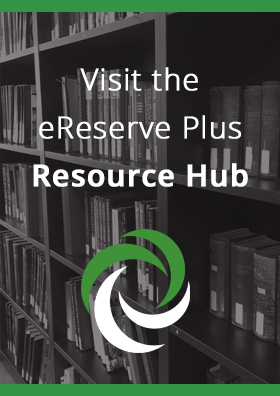Librarians and faculty members are always intent on seeing students succeed. However, without adequate library analytics and reliable data surrounding resource usage, this is significantly more difficult to achieve. Fortunately, evolving technologies and advanced solutions are quickly becoming widely available to universities — to help them diminish common problems and ultimately promote student engagement and success.
Read on to learn more about the challenges associated with efficient management of library holdings and acquisitions, as well as the solutions that are being introduced to streamline the process.
Three leading universities released a joint statement claiming analytics can save higher education.
The issue with library holdings and the procurement of excess resources
Library holdings are an incredibly important resource for universities, consisting of the catalogue of books and journals libraries own. However, identifying the most relevant and valuable of these resources efficiently and effectively has become increasingly difficult in recent years.
The procurement of these resources often involves librarians negotiating with subscription providers, which can lead to bundling and pressure to buy excess resources that might not be needed at the university. For example, librarians may want access to specific content that’s costly, therefore, if they bundle content from a publisher they can obtain more information at a cheaper price. This is seemingly more economical for libraries but also leads to universities purchasing excess resources that may be irrelevant, deliver little value to faculty and students or are needless.
While additional resources may seem like a boon to a university’s library holdings, these add to budgetary pressure and may be superfluous expenses. As a result, universities need evidence based systems to provide useful insight and data to help them invest in the right materials to ensure the success of their students. In fact, subscription bundling can quickly drive up costs while having little to no impact on graduation rates or student success, per a report from the ACTA. This emphasises the fact that organisations need to allocate their resources efficiently and intelligently to not only save the university money on unnecessary expenses but also to promote effective, evidence based student results and engagement.
Implementing advanced solutions to ensure proper resource acquisition and usage
To ensure evidence based resource acquisition and allocation, librarians, faculty members and higher education providers are turning to valuable real-time engagement data and analytics for better decision making and budgeting. Utilising such data will prove integral moving forward, as three leading universities released a joint statement claiming analytics can “save higher education.”
 Utilising library analytics and valuable data leads to more efficient resource usage for institutions
Utilising library analytics and valuable data leads to more efficient resource usage for institutionsWith eReserve Plus, librarians and faculty have access to systems that provide data and evidence-based decisions on what students are engaging with — which ultimately helps identify at-risk students and university libraries to decide what content is necessary to resource. The eReserve Plus Analytics dashboard and Analytics API effectively shows what content is being used and whether it is of value or not to both the students and the university, identifies KPI progress and gives evidence based information to help better decision making.
The features and analytics provided by eReserve Plus can benefit librarians by:
- Offering critical insights into university content: The eReserve Plus system significantly improves oversight for librarians and their holdings. This is a necessity to make more informed decisions surrounding resources moving forward.
- Reducing the workload on faculty members: For example, pre-semester reading list management can put a strain on workloads, but eReserve Plus effectively identifies faculty and library staff members who may be under pressure and show universities where resourcing and workload issues lie.
- Saving the university money long-term: With a clear understanding of what content has been valuable and continues to be used by students and faculty, universities can save money by avoiding the procurement of superfluous resources.
- Boosting student engagement: Early intervention and identification of at-risk students with low levels of engagement has a substantial impact on how well students perform. With the necessary assistance, support and content at their disposal, universities are likely to experience an increase in student engagement, and, ultimately, student success. Highly engaged students do better!
The value of evidence based data and decision making is significant. In fact, utilising analytics not only saves costs and benefits engagement, but also increases student retention as a result. According to the RPK Group, improving student retention alone can save colleges approximately $1 million annually. This opens the door of possibilities for how much universities and education providers can gain and save with the right understanding of the value of real-time data and analytics.
Overall, leveraging robust data and library analytics can help universities ensure their budgets and resources are being allocated efficiently — which ultimately promotes higher student engagement at universities. If you’re ready to improve your resource usage and student achievement, contact us to learn more about eReserve Plus or start a free trial.


